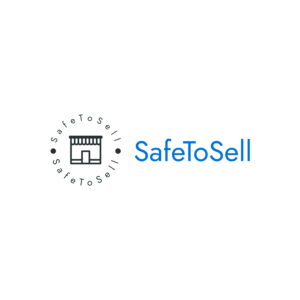Category Archives: Fashion
Domain Name Registration and Management: A Step-by-Step Guide
- Finance, Automotive, Beauty, Blogs, Business, E-commerce, Education, Entertainment, Fashion, Food, Health, Home, Lifestyle, Non-profit, Parenting, Real Estate, Services, Sports, Technology, Travel, Wedding
- 25 Apr 2023
- user
A Step-by-Step Guide for SEO-friendly Domain Ownership
When it comes to establishing an online presence, registering and managing a domain name is a critical step. A domain name serves as the address for your website, making it accessible to users on the internet. It’s not only important for branding purposes but also plays a significant role in search engine optimization (SEO) by impacting website visibility, organic traffic, and overall online performance. In this article, we will provide a step-by-step guide on how to register a domain name, set up DNS, manage domain renewals, transfers, and other important considerations for domain name ownership, all while keeping SEO in mind.
The first step in domain name registration is choosing the right domain name for your website. When selecting a domain name, consider the following SEO-friendly tips:
Keep it relevant: Choose a domain name that is relevant to your business, industry, or target audience. Including keywords related to your website’s content can help improve SEO by signaling to search engines what your website is about.
Example: If you have a website that sells organic skincare products, consider a domain name like organicskincare.com or naturalskincareproducts.com.
Keep it simple: Choose a domain name that is easy to spell, pronounce, and remember. Avoid using hyphens, numbers, or special characters that can confuse users and make it harder for search engines to understand.
Example: Avoid domain names like best-skin-care-products-123.com or skincare4u.com.
Keep it short: Short domain names are easier to remember and share. Avoid long and complex domain names that can be cumbersome for users and affect SEO negatively.
Example: Prefer a domain name like skincare.com over bestorganicnaturalskincareproducts.com.
Keep it unique: Choose a domain name that is distinctive and not easily confused with competitors. This can help create a strong online brand identity and improve SEO by reducing confusion and increasing brand recall.
Example: If there is a popular skincare brand called “GlowingSkin,” avoid registering a similar domain name like “Glowing-Skin” to prevent confusion.
Step 2: Registering a Domain Name
Once you have chosen a domain name, the next step is to register it with a domain registrar. Follow these steps to register a domain name:
Choose a reputable domain registrar: There are many domain registrars available, so choose a reputable and reliable one. Popular domain registrars include GoDaddy, Namecheap, and Google Domains.
Check domain name availability: Use the domain registrar’s search tool to check if your desired domain name is available. If it’s already taken, try different variations or consider using a different top-level domain (TLD), such as .com, .org, .net, or country-specific TLDs like .co.uk or .ca.
Complete registration process: Follow the registration process provided by the domain registrar, which typically involves providing personal and contact information, choosing a registration period (usually 1-10 years), and making payment for the registration fee.
Provide accurate contact information: It’s important to provide accurate and up-to-date contact information during registration, as this information is used for domain ownership verification and communication regarding domain renewals, transfers, and other important notifications.
Step 3: Setting up DNS
DNS (Domain Name System) is responsible for translating human-readable domain names into IP addresses that computers can understand. Proper DNS setup is crucial for website accessibility and SEO. Here’s how to set up DNS for your domain name:
Access DNS management settings: Log in to your domain registrar or DNS provider account and access the DNS management settings for your domain name.
Configure DNS records: DNS records are used to specify how the domain name should resolve to the website’s IP address. Create the necessary DNS records, such as A records for the website’s IP address, CNAME records for aliases or subdomains, and MX records for email server settings.
Choose a DNS provider: Most domain registrars offer DNS services, but you can also choose a separate DNS provider for more customization and control. Popular DNS providers include Cloudflare, Amazon Route 53, and Google Cloud DNS.
Example: If your website’s IP address is 123.45.67.89, you would create an A record with that IP address in the DNS settings.
Step 4: Managing Domain Renewals and Transfers
Domain name ownership requires regular management, including renewals and transfers. Here are some important considerations:
Set up auto-renewal: Enable auto-renewal with your domain registrar to avoid accidentally losing ownership of your domain due to expiration. Set up notifications to remind you of upcoming renewals.
Keep contact information updated: Ensure that your contact information with the domain registrar is accurate and up-to-date. This is crucial for domain ownership verification and receiving important notifications about domain renewals or transfers.
Transfer domains carefully: If you decide to transfer your domain to a different registrar, follow the transfer process provided by the new registrar carefully. Keep in mind that domain transfers may take several days to complete, and your website may experience downtime during the transfer process.
Example: If you want to transfer your domain from GoDaddy to Namecheap, follow the transfer instructions provided by Namecheap and ensure that you have obtained the necessary authorization codes from GoDaddy.
Protect domain privacy: Domain registrars offer domain privacy services to protect your personal contact information from being publicly displayed in the WHOIS database. Consider enabling domain privacy to prevent spam or unwanted contact.
Registering and managing a domain name is a crucial step in building an online presence and optimizing your website for SEO. By choosing a relevant, simple, short, and unique domain name, setting up DNS correctly, and managing domain renewals and transfers carefully, you can ensure that your website is accessible, visible, and search engine-friendly. Remember to keep your contact information updated and protect your domain privacy to maintain ownership and control over your domain name. Follow these steps, and you'll be on your way to establishing a strong online presence with an SEO-friendly domain name.
Domain Name Branding: Building a Strong Brand Identity
- Automotive, Beauty, Blogs, Business, E-commerce, Education, Entertainment, Fashion, Finance, Food, Health, Home, Lifestyle, Non-profit, Parenting, Real Estate, Services, Sports, Technology, Travel, Wedding
- 25 Apr 2023
- user
Building a Strong Brand Identity with Your Domain Name: A Guide to Choosing a Brand-Reflective Domain Name for Your Website
In today’s highly competitive online world, building a strong brand identity is crucial for the success of any business. Your brand represents your company’s values, messaging, and positioning, and it plays a significant role in shaping how your target audience perceives your business. One often overlooked but essential aspect of brand building is your domain name. Your domain name is the online address of your website and serves as the foundation for your online presence. In this article, we will explore the importance of domain name branding and provide tips on how to choose a domain name that reflects your brand values, messaging, and positioning, ultimately contributing to a strong brand identity.
Brand Consistency
Your domain name is an opportunity to reinforce your brand consistency across all touchpoints. A consistent brand identity helps build trust and recognition among your target audience. When your domain name reflects your brand values, messaging, and positioning, it creates a cohesive and unified brand image, leading to better brand recall and brand recognition.
Example: If your brand is all about sustainability and eco-friendly products, a domain name like “greenplanetproducts.com” or “sustainableliving.com” reflects your brand’s values and messaging, creating a consistent brand identity across your website, social media, and other marketing materials.
Brand Recall
A memorable domain name can significantly impact brand recall. When your domain name is easy to remember and aligns with your brand, it becomes a powerful marketing tool that users can recall and type directly into their browsers, resulting in repeat visits and increased brand exposure.
Example: A domain name like “beautybliss.com” for a beauty and cosmetics brand is memorable, catchy, and reflective of the brand’s messaging of providing a blissful beauty experience. Users are more likely to remember and revisit a website with such a memorable domain name.
Brand Positioning
Your domain name can convey your brand positioning and help you target your ideal audience. It can communicate the nature of your business, the industry you operate in, and the target market you serve. A domain name that reflects your brand positioning can attract the right audience and set the right expectations.
Example: If you have a luxury fashion brand targeting affluent customers, a domain name like “elegantfashionboutique.com” or “luxuryfashionhub.com” conveys the premium nature of your brand and appeals to your target audience, helping you position your brand accordingly.
Brand Differentiation
A unique and distinctive domain name can set you apart from the competition and help you differentiate your brand in a crowded online marketplace. It can create a memorable impression and make your brand stand out in the minds of your target audience.
Example: “Zappos.com” is a unique and memorable domain name for an online shoe retailer, setting them apart from competitors with generic domain names. It has become synonymous with their brand, creating a distinct brand identity and helping them differentiate in a highly competitive industry.
Brand Extension
Your domain name can also allow for future brand extensions and expansions. If you plan to diversify your offerings or expand your business in the future, choosing a domain name that accommodates these potential changes can save you the hassle of rebranding and changing your domain name down the line.
Example: If you have a domain name like “techguru.com” and plan to expand your business from providing tech-related content to also selling tech products in the future, the domain name allows for brand extension without having to change the domain name, maintaining brand consistency and continuity.
Remember, a domain name is not just an address for your website, but an essential component of your overall brand strategy. Consider the following tips when choosing a domain name for your brand:
Be consistent: Choose a domain name that aligns with your brand values, messaging, and positioning, ensuring consistency across all touchpoints.
Be memorable: Opt for a domain name that is easy to remember and stands out from the competition to improve brand recall.
Be reflective: Your domain name should convey the nature of your business, the industry you operate in, and the target market you serve to effectively communicate your brand positioning.
Be unique: Choose a distinctive domain name that sets you apart from competitors and helps create a memorable brand identity.
Be future-proof: Consider potential brand extensions or expansions in the future and choose a domain name that allows for flexibility and continuity.
Example:
Let’s take the example of a fictional boutique fitness studio called “FitLife.” FitLife is a brand that promotes an active and healthy lifestyle through its fitness classes and wellness programs. Based on their brand values and messaging, they want a domain name that reflects their brand identity and resonates with their target audience. After conducting keyword research and brainstorming creative options, they come up with the following domain name options:
fitlifeactive.com
wellnessfitlife.com
energizeyourfitlife.com
fitlifestudio.com
After careful consideration, they choose the domain name “fitlifestudio.com” as it aligns with their brand values of promoting an active lifestyle, conveys their positioning as a fitness studio, is easy to remember, and allows for future brand extensions like adding additional fitness services or expanding to multiple locations.
In conclusion, choosing a domain name that reflects your brand values, messaging, and positioning is crucial for building a strong brand identity online. It contributes to brand consistency, recall, positioning, differentiation, and future brand extensions. Take the time to carefully select a brand-reflective domain name that aligns with your brand strategy and resonates with your target audience, and you'll establish a memorable and effective online presence for your business.
Recent Posts
- Domain Name Trends and Future Outlook: Exploring the latest trends
- Domain Name Strategies: For Local Businesses
- Premium Domain Names: Understanding the value and benefits of premium domain names
- Domain Name SEO Best Practices: Tips and best practices
- Domain Name Legal Considerations: Best Practices for Protecting Your Domain Name Assets
- Domain Name Registration and Management: A Step-by-Step Guide
- Domain Name Branding: Building a Strong Brand Identity
- The Importance of Domain Name Keywords: Exploring the Role of Keyword
- Understanding Domain Extensions: Domain Extensions and Their Implications
- The Art of Choosing the Perfect Domain Name: Tips and best practices
Products
-
 BuyNonVeg.com
$35,000.00
BuyNonVeg.com
$35,000.00
-
 RummyMatch.com
$18,999.00
RummyMatch.com
$18,999.00
-
 LensFace.com
$17,999.00
LensFace.com
$17,999.00
-
 SportsBeing.com
$14,999.00
SportsBeing.com
$14,999.00
-
 BaldClinic.com
$12,499.00
BaldClinic.com
$12,499.00
-
 Desi.xyz
$11,699.00
Desi.xyz
$11,699.00
-
 RummyCoin.com
$11,111.00
RummyCoin.com
$11,111.00
-
 EndFree.com
$9,999.00
EndFree.com
$9,999.00
-
 VerifyView.com
$9,999.00
VerifyView.com
$9,999.00
-
 CricketFM.com
$9,999.00
CricketFM.com
$9,999.00
-
 SafeToSell.com
$9,999.00
SafeToSell.com
$9,999.00
-
 Refrush.com
$7,999.00
Refrush.com
$7,999.00
-
 WishLearn.com
$7,499.00
WishLearn.com
$7,499.00
-
 BhutanPay.com
$6,999.00
BhutanPay.com
$6,999.00
-
 PolicyBargain.com
$6,999.00
PolicyBargain.com
$6,999.00
-
 OTTLearn.com
$6,999.00
OTTLearn.com
$6,999.00
-
 DiscoTree.com
$6,499.00
DiscoTree.com
$6,499.00
-
 Zataverse.com
$5,999.00
Zataverse.com
$5,999.00
-
 Taxena.com
$5,999.00
Taxena.com
$5,999.00
-
 BackToMusic.com
$5,199.00
BackToMusic.com
$5,199.00

